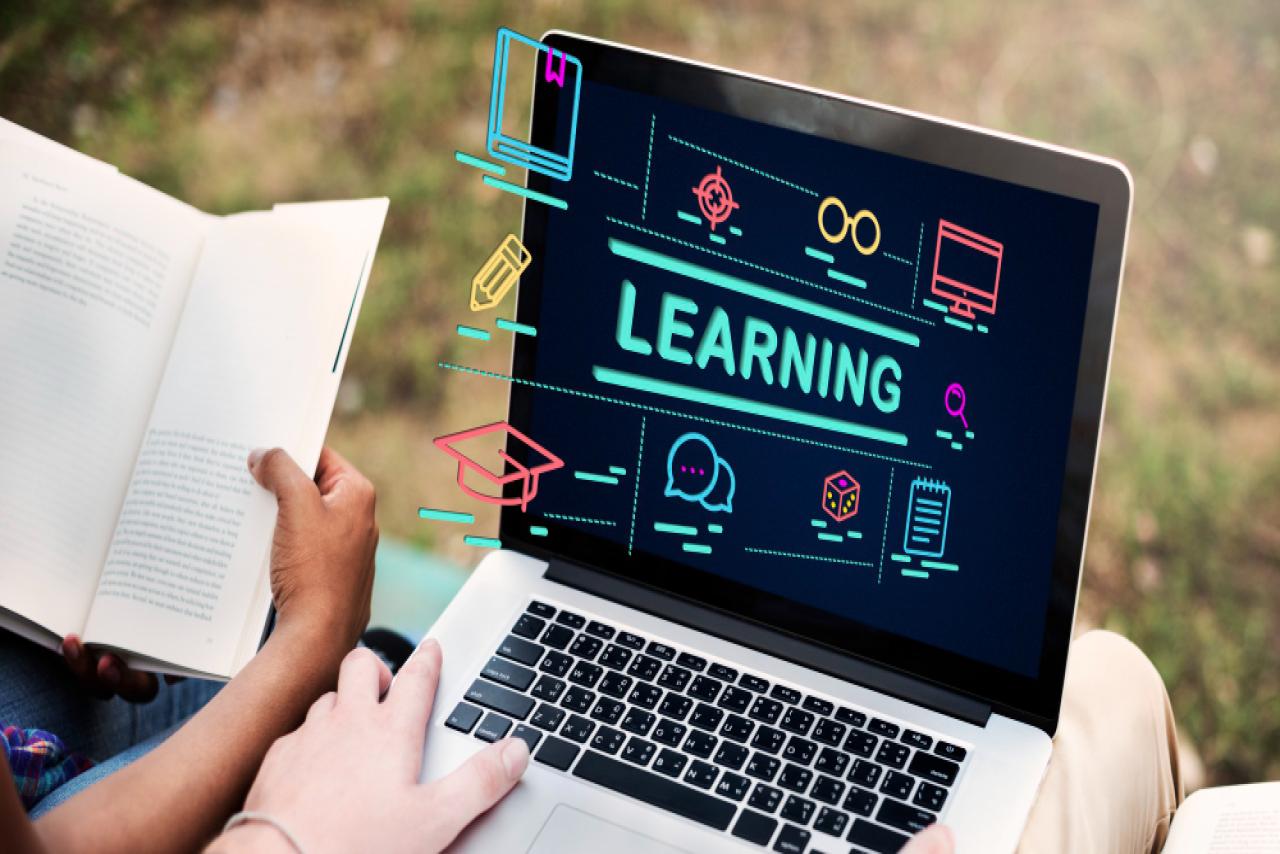In today's fast-paced world, traditional learning methods may not always be enough to keep up with the ever-evolving knowledge landscape. That's where e-learning comes into play, offering a flexible and convenient alternative that empowers learners to take control of their educational journey. In this article, we will explore the rise and benefits of e-learning, and delve into effective strategies to maximize your learning potential in the digital realm.
Understanding E-Learning
Defining e-learning and its components
E-learning, also known as electronic learning, is a broad term that encompasses any form of learning facilitated by digital technology. It involves the use of computers, tablets, or mobile devices to deliver educational content, whether asynchronously or synchronously.
Types of e-learning platforms and technologies
E-learning platforms vary widely, ranging from learning management systems (LMS) that offer structured courses to massive open online courses (MOOCs) that provide open-access educational resources. Technologies such as web conferencing, interactive simulations, and virtual classrooms further enhance the e-learning experience.
Advantages of e-learning over traditional methods
E-learning offers a multitude of advantages over traditional learning methods. Firstly, it enables learners to access educational materials anytime, anywhere, breaking the barriers of time and geography. Additionally, e-learning allows for self-paced learning, catering to individual needs and preferences. Furthermore, it promotes engagement through interactive multimedia elements and fosters collaborative learning through social interaction, ultimately leading to a more immersive and effective learning experience.
Effective E-Learning Strategies
To make the most of your e-learning journey, employing effective strategies is cruc and reward yourself for milestones achieved. Join online study group.
Enhancing E-Learning with Technology
To leverage the full potential of e-learning, incorporating cutting-edge technologies can take your learning experience to the next level. Here are some technologies that enhance e-learning:
Leveraging artificial intelligence and machine learning
Artificial intelligence and machine learning algorithms can personalize learning paths, provide adaptive assessments, and offer intelligent recommendations, thus tailoring the educational experience to individual needs and optimizing learning outcomes.
Exploring virtual reality and augmented reality applications
Virtual reality (VR) and augmented reality (AR) technologies create immersive and interactive learning environments, enabling learners to engage with virtual objects and scenarios. These technologies enhance experiential learning and foster deeper understanding.
Integrating mobile learning for on-the-go access
Mobile devices have revolutionized learning, allowing learners to access educational materials anytime and anywhere. Mobile learning platforms, optimized for smaller screens, offer flexibility and convenience, catering to the on-the-go lifestyle of modern learners.
E-Learning in Different Contexts
E-learning finds applications in various contexts, catering to diverse educational needs. Here are some examples:
E-Learning for formal education
E-learning has gained prominence in traditional educational institutions, facilitating distance learning and blended learning programs. Students can access course materials, interact with instructors, and submit assignments online, offering flexibility and enhancing accessibility.
E-Learning for professional development and upskilling
To stay competitive in today's rapidly evolving job market, continuous professional development is essential. E-learning platforms offer a wide range of courses and certifications, enabling professionals to upskill and acquire new knowledge conveniently.
E-Learning for lifelong learning and personal growth
E-learning is not restricted to formal settings; it also caters to lifelong learners seeking personal growth and the pursuit of diverse interests. Online libraries, open educational resources, and self-paced courses provide opportunities for individuals to expand their knowledge and skills.
E-Learning and the Future of Education
The future of education is intricately tied to the evolution of e-learning. Exciting trends and advancements pave the way for a transformative educational landscape. Consider the following:
Trends and advancements shaping the future of e-learning
The gamification of learning, virtual reality simulations, personalized adaptive learning paths, and the integration of artificial intelligence are some of the trends shaping the future of e-learning. These innovations promise to revolutionize education and reshape traditional learning structures.
Potential challenges and opportunities for e-learning
Despite its tremendous potential, e-learning also faces challenges such as access to reliable internet connectivity and ensuring equity in education. However, e-learning also presents opportunities to bridge the education gap, reach marginalized communities, and provide lifelong learning opportunities for all.
E-Learning's role in making education accessible for all
E-learning has the power to democratize education by breaking down barriers of entry. It enables individuals from different socioeconomic backgrounds, locations, and abilities to access quality education. E-learning platforms offer flexibility, affordability, and inclusion for learners worldwide.
E-Learning Success Stories
Numerous success stories demonstrate the transformative impact of e-learning. Here are some examples:
Examples of successful e-learning implementations
Online universities, such as Coursera and edX, have enabled millions of learners worldwide to access top-tier education from renowned institutions. Corporate training programs leveraging e-learning platforms have also boosted employee performance and productivity.
Impact of e-learning on individuals, industries, and communities
E-learning has empowered individuals to acquire new skills, pivot careers, and realize their full potential. Industries have benefited from cost-effective training solutions, increased employee engagement, and improved knowledge retention. Communities have witnessed increased access to education and expanded opportunities for socioeconomic growth.
Conclusion
E-learning opens a world of possibilities, revolutionizing the way we approach education. With its flexibility, personalized experience, and utilization of innovative technologies, e-learning offers unparalleled benefits for learners of all backgrounds. Embrace the power of e-learning, expand your horizons, and unlock your full learning potential.
FAQs
Below are answers to some commonly asked questions about e-learning:
What are the minimum technical requirements for e-learning?
The specific technical requirements may vary depending on the e-learning platform or course. Generally, you will need a stable internet connection, a computer or mobile device, and compatible software or browsers. Check the platform's technical specifications for detailed requirements.
How does e-learning cater to different learning styles?
E-learning platforms often provide customizable learning experiences, enabling learners to choose content formats, presentation styles, and interactive elements that align with their preferred learning styles. By offering a variety of resources and delivery methods, e-learning caters to diverse learning preferences.
Can e-learning replace traditional classroom education?
E-learning should not be seen as a replacement for traditional classroom education but rather as a complementary approach. While e-learning offers flexibility and convenience, face-to-face interactions and hands-on experiences provided by traditional classrooms are still valuable for certain subjects and learning objectives.
How can e-learning be cost-effective compared to traditional methods?
E-learning eliminates the need for commuting to physical locations, reducing travel costs and time. Additionally, the scalability of e-learning allows for a high number of learners without significant infrastructure requirements. These factors contribute to cost savings, making e-learning a cost-effective alternative to traditional learning methods.
What steps can individuals take to excel in e-learning?
To excel in e-learning, individuals should set clear goals, establish effective time management strategies, actively engage with course content and resources, and actively participate in online discussions and collaborative activities. Regular self-assessment and seeking feedback from instructors can also help enhance learning outcomes. clarificationps or find an accountability partner to stay motivated and engaged. effective instructor support and feedback Timely feedback and support from instructors are essential in e-learning. Ensure that the chosen e-learning platform offers channels for communication and prompt feedback. Reach out to instructors whenever you have questions or need
Addressing potential lack of social interaction
One potential drawback of e-learning is the absence of face-to-face social interaction. Mitigate this by actively participating in online discussion forums, engaging in virtual group projects, and seeking opportunities for networking and collaboration within your e-learning community.
Providingial. Here are some proven techniques to enhance your learning experience:
Setting clear learning objectives
Before embarking on any learning endeavor, it is essential to define clear and specific goals. By setting learning objectives, you can focus your efforts and measure your progress, ensuring a purpose-driven learning experience.
Personalizing learning experiences
Tailoring the learning process to individual strengths, preferences, and capabilities can greatly enhance retention and motivation. E-learning offers various tools and technologies that allow for adaptive learning paths and personalized content delivery, catering to each learner's unique needs.
Incorporating interactive multimedia elements
Engagement plays a critical role in effective learning. By incorporating interactive multimedia elements such as videos, simulations, and quizzes, e-learning provides a dynamic and immersive experience that promotes active participation and retention of knowledge.
Implementing social learning and collaboration
One of the key advantages of e-learning is its ability to facilitate social interaction and collaborative learning. Online discussion forums, group projects, and peer-to-peer interactions foster a sense of community and enable learners to share insights, exchange ideas, and learn from one another.
Offering adaptive and personalized assessments
Assessments are integral to the learning process, providing feedback and measuring progress. E-learning platforms offer adaptive assessments that adjust the difficulty level based on the learner's performance, ensuring a personalized and challenging evaluation.
Gamification techniques for enhanced engagement
Gamification adds an element of fun and motivation to the learning process. By incorporating game-like elements such as badges, leaderboards, and rewards, e-learning transforms the educational experience into an enjoyable journey, fostering motivation and healthy competition.
Choosing the Right E-Learning Platform
Selecting the appropriate e-learning platform is crucial to ensure a seamless learning experience. Consider the following factors when evaluating different platforms:
Evaluating your learning needs and goals
Identify your specific learning needs and goals to determine which platform aligns best with your requirements. Consider factors such as the subject matter, level of interactivity, and available resources.
Comparing and contrasting different e-learning platforms
Research and compare various e-learning platforms, analyzing their features, functionalities, and user reviews. Look for platforms that provide a user-friendly interface, comprehensive course offerings, and robust support services.
Assessing the platform's user-friendliness and accessibility
An intuitive and user-friendly interface is vital for a seamless learning experience. Ensure that the e-learning platform provides easy navigation, responsive design for different devices, and accessibility features for diverse learners.
Considering features like content variety, customization, and analytics
Look for e-learning platforms that offer a wide range of content, catering to different learning styles and preferences. Customization features allow learners to tailor the learning experience to their needs, and analytics provide valuable insights into progress and performance.
Overcoming Challenges in E-Learning
While e-learning offers numerous benefits, it is not without challenges. Here are some common challenges and ways to overcome them:
Dealing with potential technical issues
Technical glitches and connectivity problems may arise during e-learning. To minimize disruptions, ensure a stable internet connection, update your devices regularly, and familiarize yourself with troubleshooting techniques. Seek technical support when needed.
Ensuring learner motivation and self-discipline
E-learning requires self-motivation and discipline. Create a structured learning schedule, set achievable goals,




